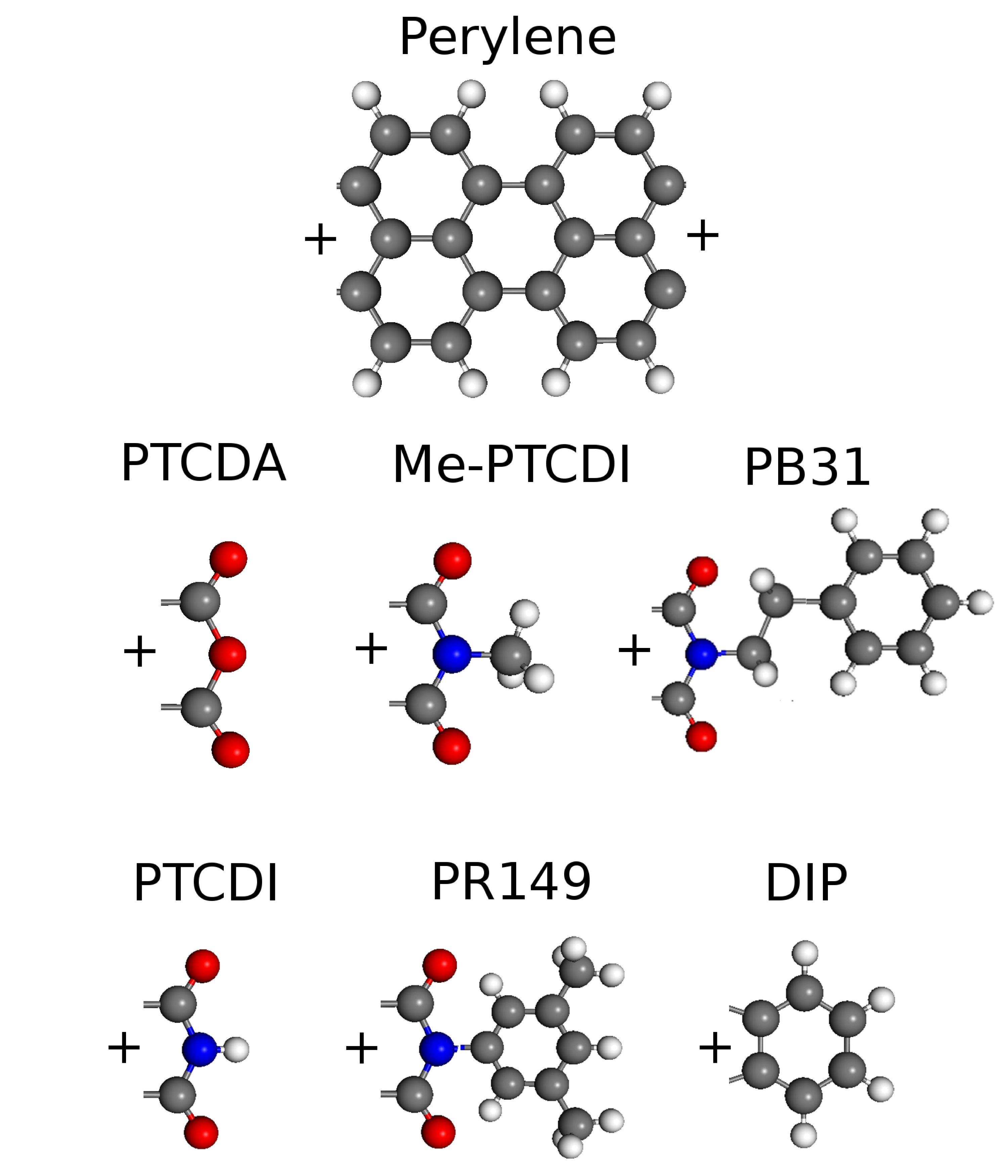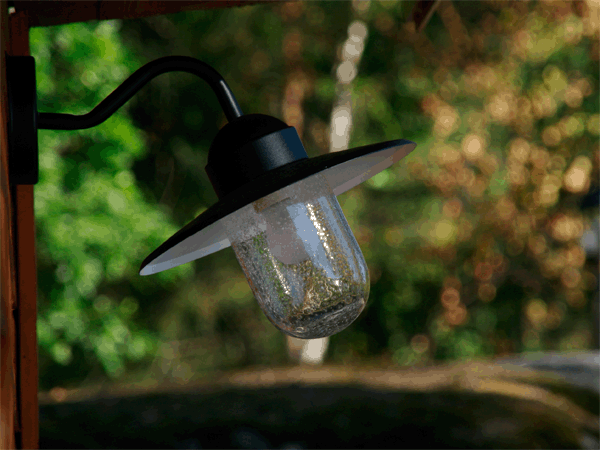Perylene Crystals
The crystal geometry of perylene compounds are governed by external forces between the stacked molecules, i.e. van der Waals attraction which strive to place the perylene center on top of each other and Coulomb interaction between charged parts of the molecules which works as a counter to the an der Waals attractive bindings and, depending on the structure and the side wings, will displace the positions of the molecules in the layers so their centers will be aligned differently than along the normal of the molecule. Thus will the side wing groups play a large role in orienting the molecules and due to this fact no perylene group will have exactly the same stacking parameters. There are great diversity in spectras for different compounds in their solid state. For PTCDA and Me-PTCDI, which have relatively small side groups the Coulomb attraction between differently charged carbon and oxygene atoms is dominant and there will be a smaller shift of the overlap. As for the molecules with larger side wings such as PR149 and PB31 the side groups will contribute largely to the sliding between the planes to a position with lesser overlap. In figure 1.1 perylene compounds are illustrated. In figure 1.2 PTCDA in its crystalline phase is presented and the crystalline phase for all the presented molecules are very similar to PTCDAs with 2 molecule per unit cells and their stacking are quasi 1 dimensional with a small distance between the planes.


An interesting features of organic molecules is how their optical
properties change when they go from being dissolved into their
crystalline phase. The theory behind this phenomena is when the
molecules are dissolved the mean distance between them are large
enough to consider the molecules to be isolated and therefore only
internal interaction within the molecule can take place. However in
the crystal phase the proximity to other molecules results in
interaction which includes intermolecular transfers. In this phase the
molecules are tightly packed together with their pi-orbitals
largely overlapping and since these are the orbitals mainly involved
in the charge transport and optical features there is a significant
change in the band structure. In the crystalline state the side wings play
a bigger role, not as a component active in the absorption directly,
but since they largely affect the amount of overlap between the
molecules. The side wings can either repulse or attract each other
depending on alignment which in turn affects the overlap between the
pi-orbitals in the perylene core, which are mainly responsible for
the optical properties. See Fig 1.3 for an illustration of difference in the
optical spectra for the same molecules in their different phases.

[1] J. Mizuguchi and K. Tojo, J. Phys. Chem. 106, 767 (2002).

